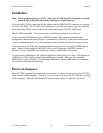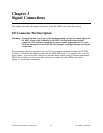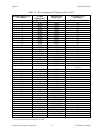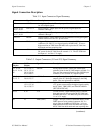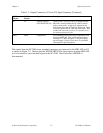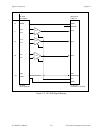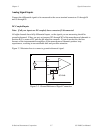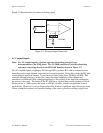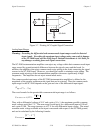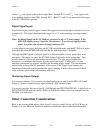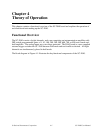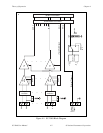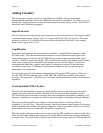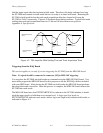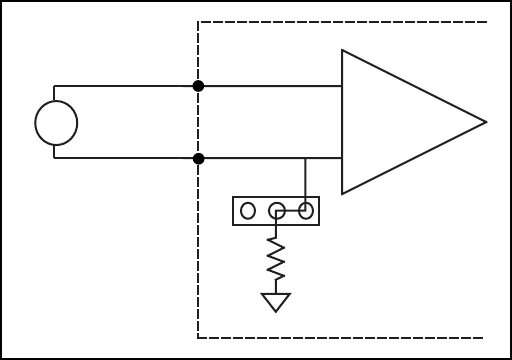
Signal Connections Chapter 3
SC-2040 User Manual 3-8 © National Instruments Corporation
Figure 3-4 illustrates how to connect a floating signal.
IN-
IN+
SC-2040
Vin
CH+
CH-
A
100 kΩ
A B C
Figure 3-4. Floating Signal Connection
AC-Coupled Signals
Note: For AC-coupled signals, you must reference the analog ground of your
instrumentation to the DAQ board. The SC-2040 connector J5 provides the analog
reference, connecting directly to the MIO-16E board as shown in Figure 3-2.
For AC-coupled signals, set jumpers W2 through W9 to position B-C with an external resistor
from the positive input channel connected to its negative ground. Doing this creates the DC path
for the positive input bias current. Typical resistor values range from 100 kΩ to 10 MΩ. This
solution, although necessary in this case, lowers the input impedance of the channel and
introduces an additional offset voltage proportional to the product of the input bias current and
the resistor value used. The inputs of the SC-2040 have a typical bias current of about ±100 pA.
When you use a 1 MΩ resistor, the result is ±100 µV of offset, which is insignificant in most
applications. However, if you use larger valued bias resistors, significant input offset may result.
Lower valued bias resistors will increase loading of the source, possibly resulting in gain error.



